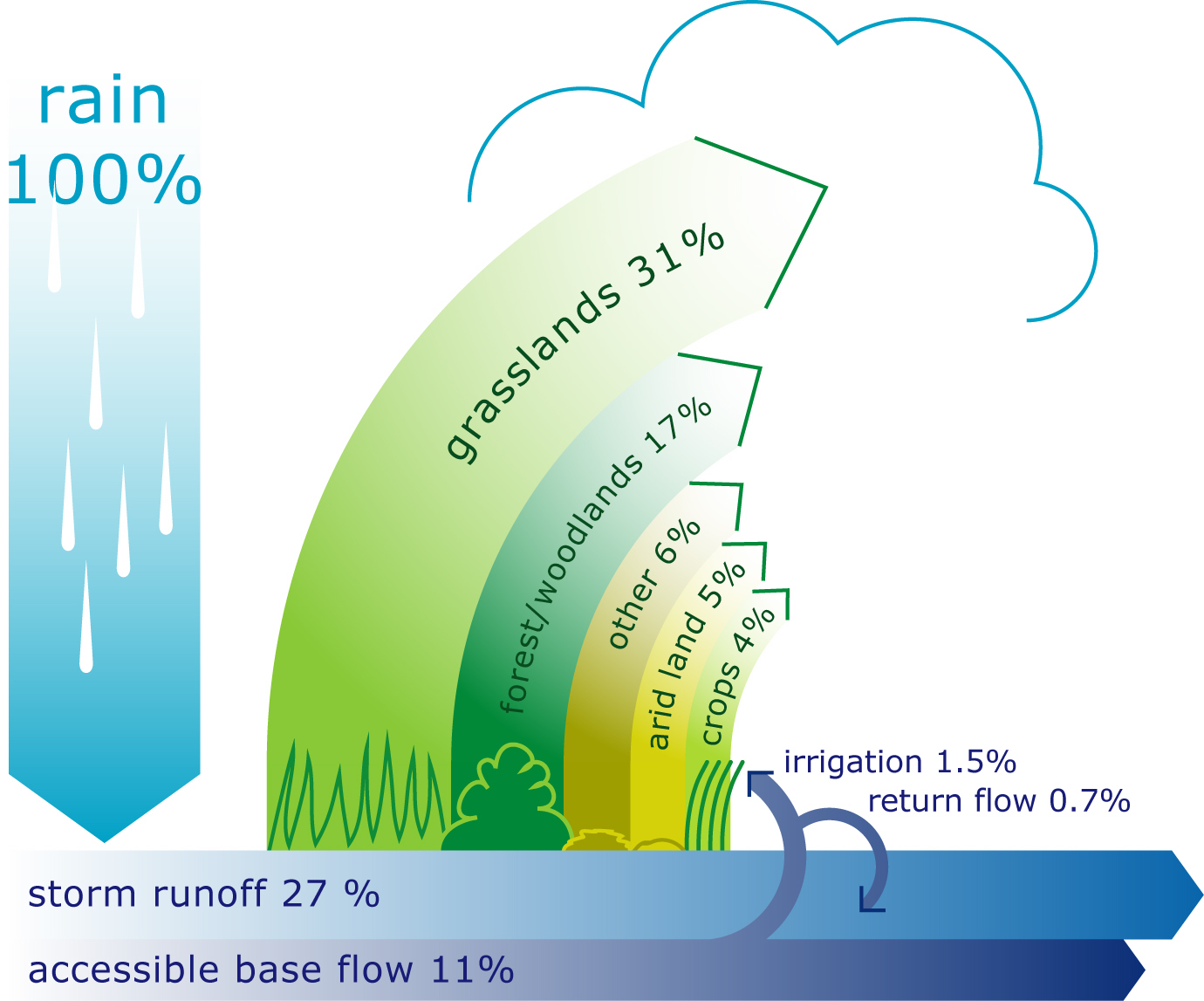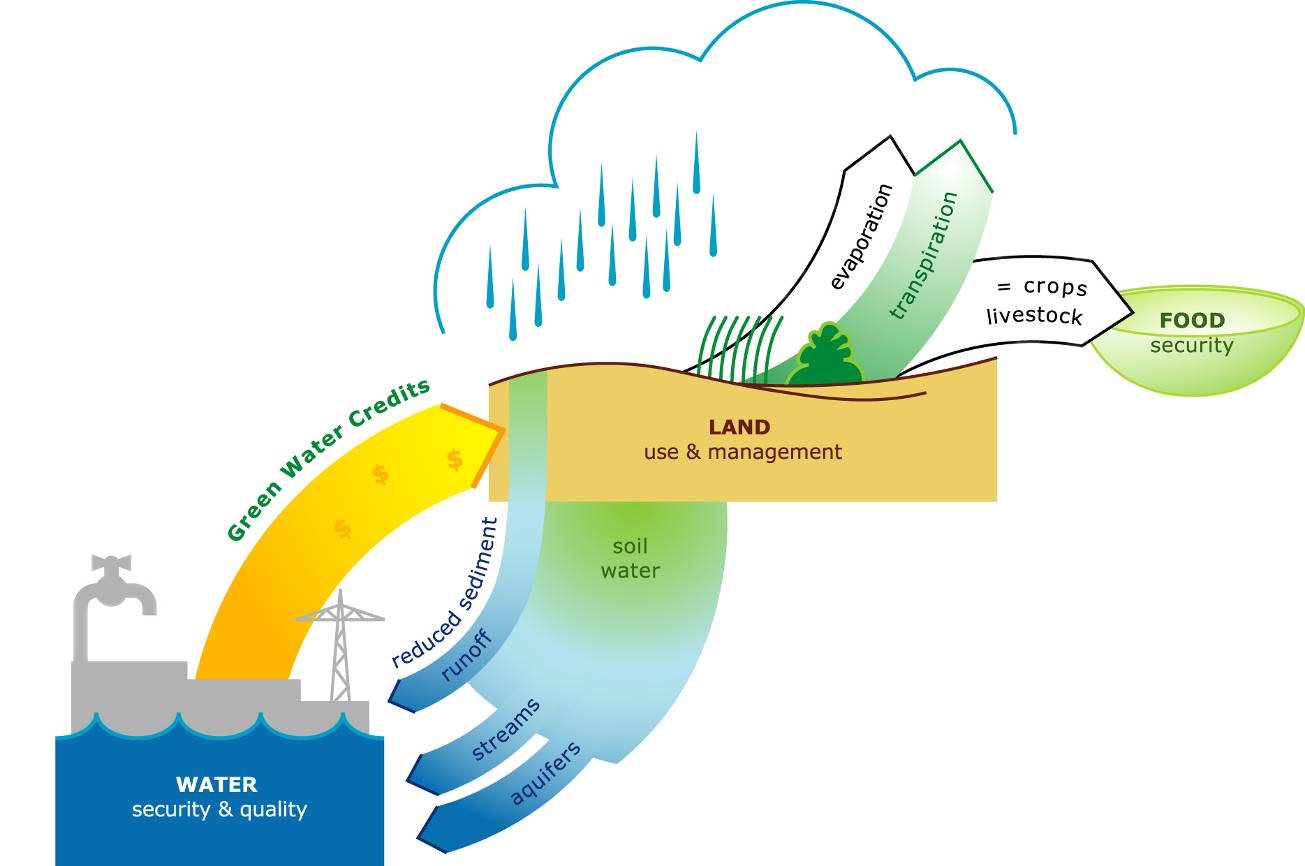Soils and Water
Soil on the Earth’s surface stores two-thirds of all fresh water, and is the largest terrestrial water reservoir. Properly managing soil water resources is essential to maintain terrestrial ecosystem functions and services. ISRIC has developed the concept of Green Water Credits (GWC), assessment tools and demonstrated the GWC approach in African countries (e.g. Kenya, and Morocco) and China in order to improve management of soil water resources. In collaboration, ISRIC hopes to expand such activities to other regions at a watershed scale.
The importance of soil water resources
Soil water or water in soil is a vital part of ecosystems:
- It is the largest water ‘reservoir’ in the terrestrial system, globally two thirds of all fresh water is held in soil, also called green water, accessible to plants; only one-tenth of fresh water is blue water - stream flow and groundwater that can be abstracted for general use (Figure 1).
- It is a crucial nutrient to plants and is also a media for transporting nutrients for plant growth; it also plays a key role in soil forming process, weathering of rocks and process of photosynthesis.
- It can become blue water or recharge groundwater by gravity.
- It controls the exchange of heat and water energy between the atmosphere and land surface.

Figure 1. Global green and blue water flows.
Maintaining soil water functioning
Recent studies on the development and evolution of terrestrial ecosystems have shown that the management of soil as reservoir of green water and regulator of streams and groundwater flows is the crucial and enabling factor - the 'driving force'. As long as the soil water reservoir is properly maintained, preservation of ecosystem and the environment is assured. The ‘3R’ approach, involving Recharge (optimizing the infiltration of rainfall and runoff water thus improving groundwater recharge and soil moisture replenishment), Retention (keeping water in the area and slowing down the outflow and helping to make groundwater easily available) and Reuse (extending chain of uses) can be applied to maintain soil water reservoir functioning properly. The Green Water Credits (GWC) approach can play a key role in implementation of the '3R' approach.
Soil water management: What ISRIC can offer
ISRIC has developed the concept of Green Water Credits (GWC) with assessment tools. GWC is a financial mechanism that supports upstream farmers to invest in improved green water management practices (Figure 2). To achieve this, a GWC fund needs to be created by downstream private and public water-use beneficiaries. Initially, public funds may be required to bridge the gap between investments upstream and the realization of the benefits downstream. The GWC assessment tools can quantify reduction of soil erosion and sedimentation and the benefits of environmental protection measures which is needed to establish a financial mechanism whereby downstream water users (for instance hydropower, irrigation and water utilities) may pay upstream land managers for improved land and water management.
The proof of GWC concept was accomplished in Kenya with subsequent implementation in Morocco, Algeria and China. There is a huge potential market for GWC worldwide.

Figure 2. Green Water Credits concept.
What can ISRIC offer to potential customers interested in this topic?
ISRIC is keen on expanding their GWC activities and is looking for cooperation partners. We can provide i) training on the concept of GWC and assessment tools; ii) help formulating collaborative projects for external funding ; iii) carry out feasibility studies and implementing projects with local partners; iv) guiding and monitoring implementation of the projects; v) training on identification of sustainable soil/land management practices (WOCAT) and their implementation in soil water management.